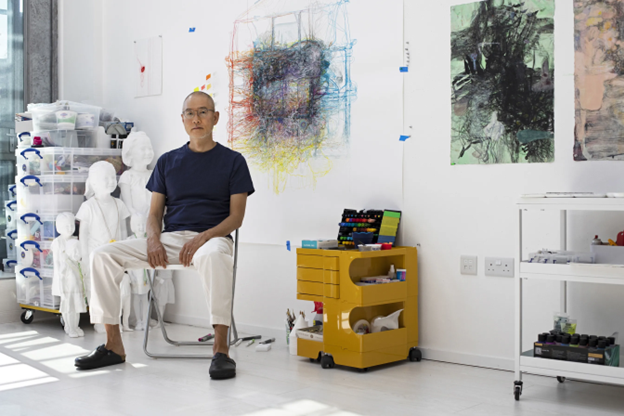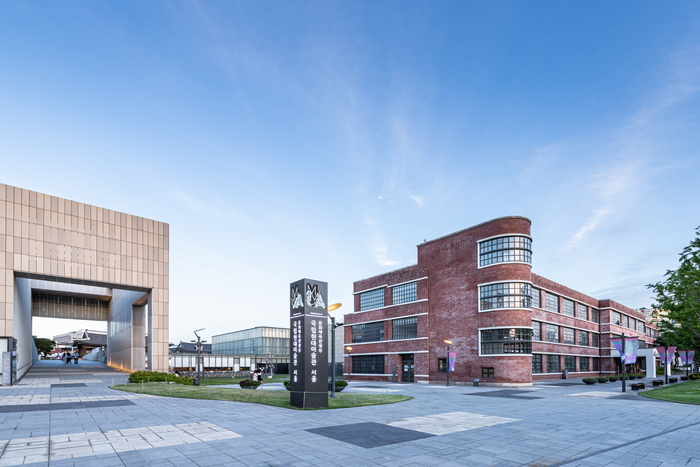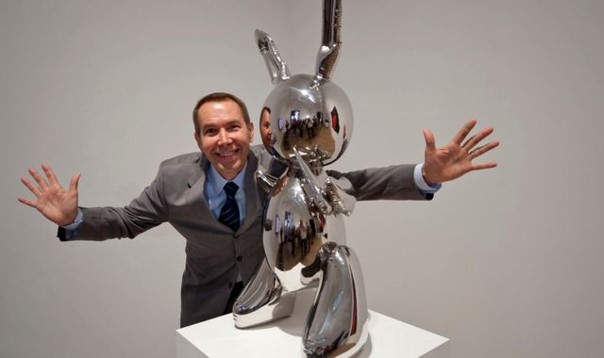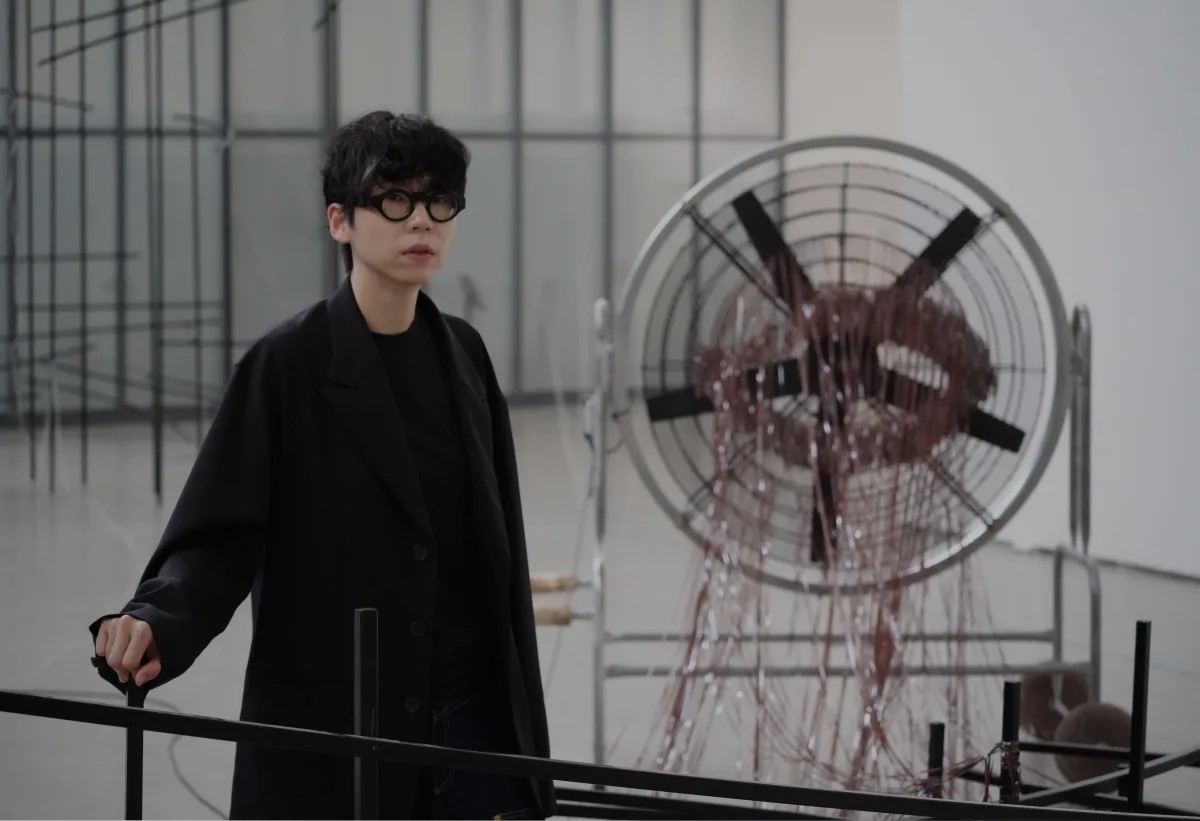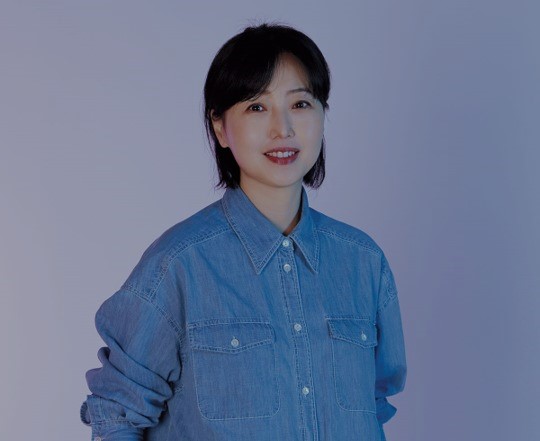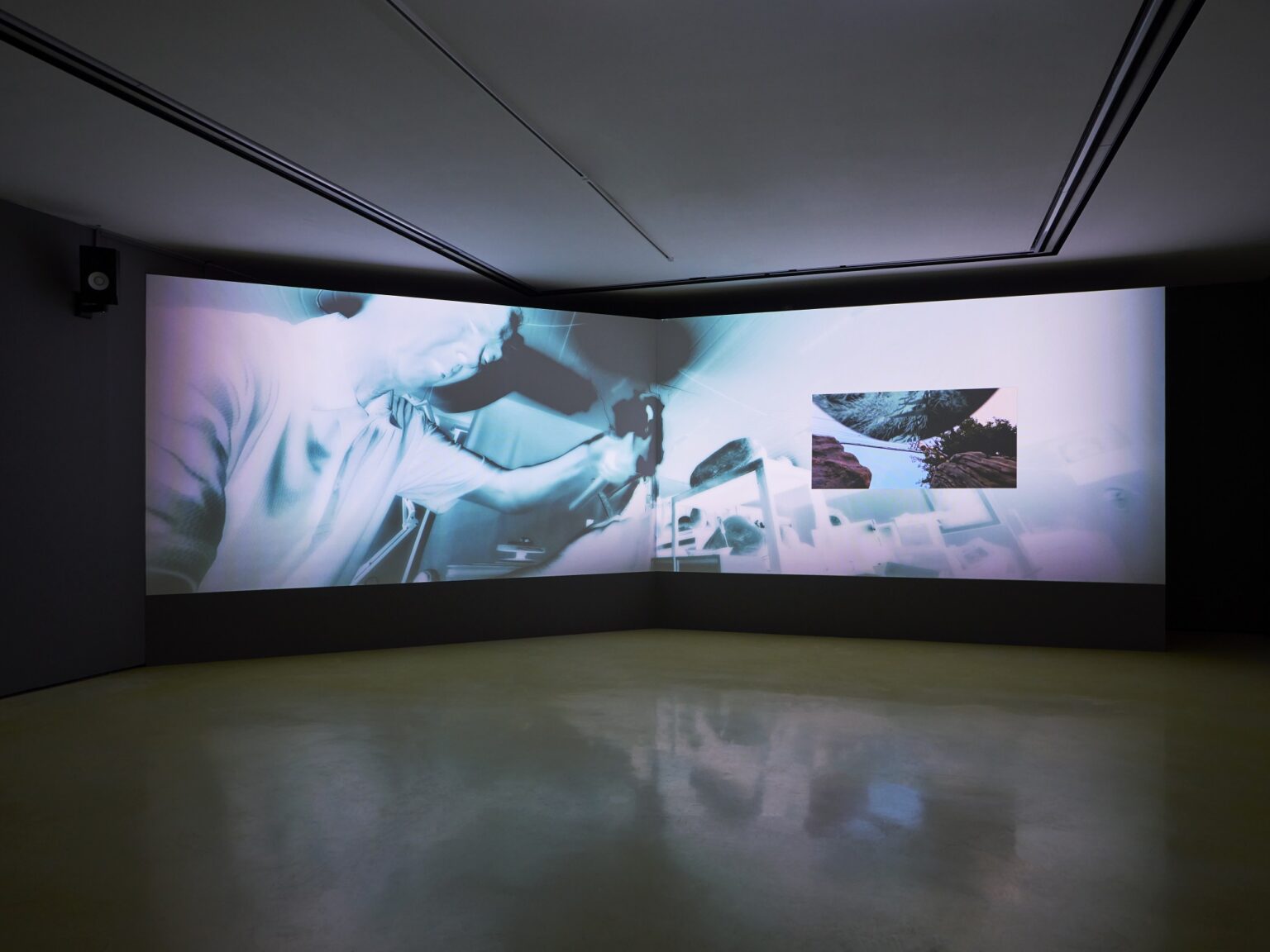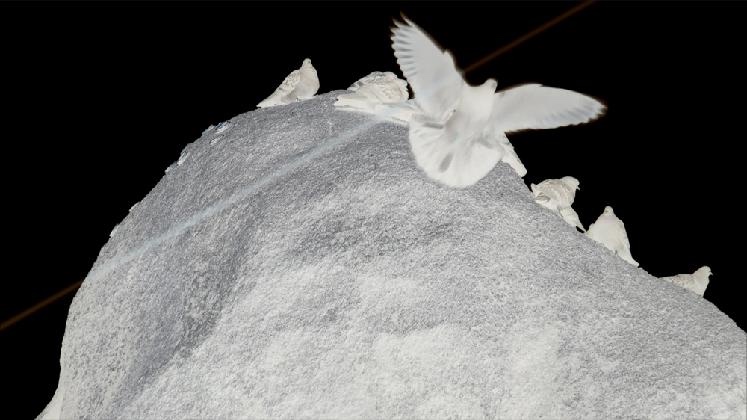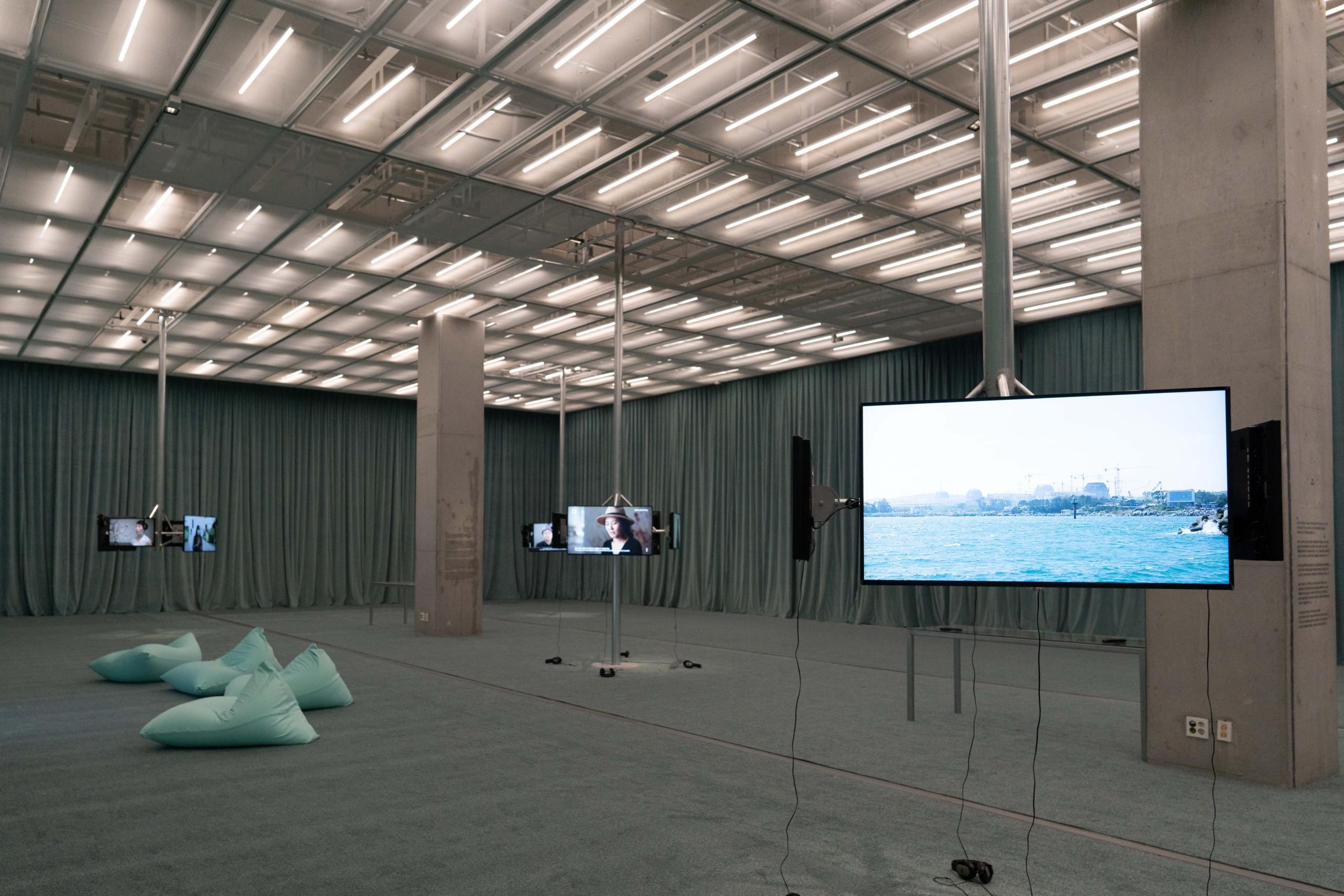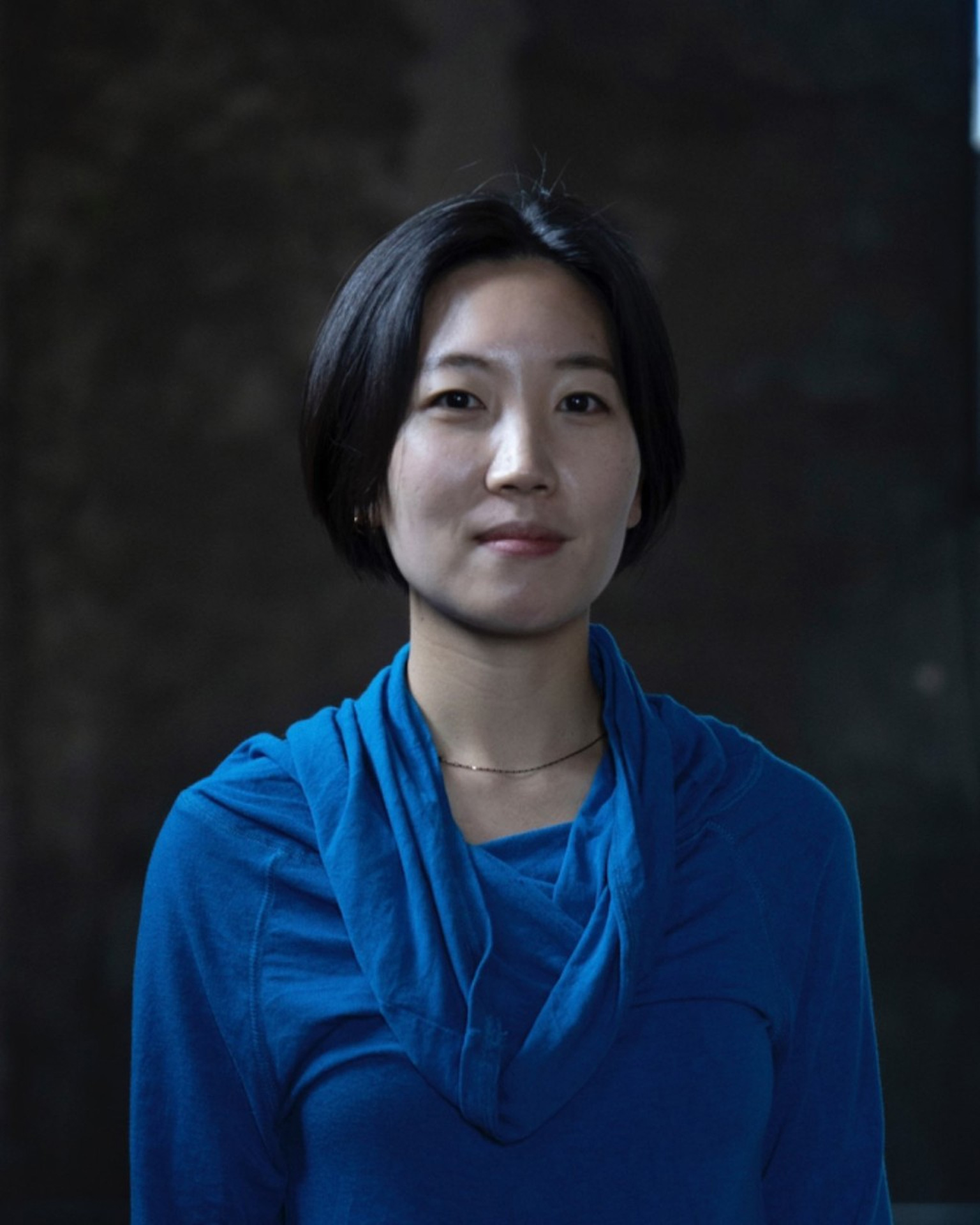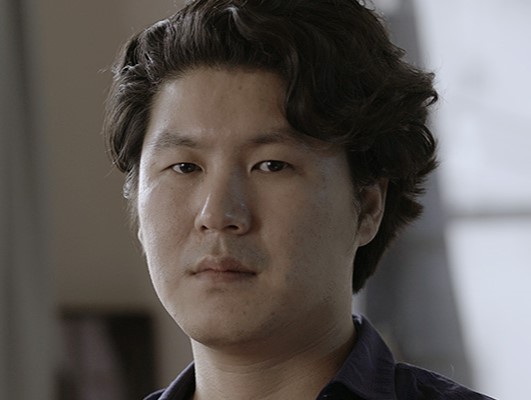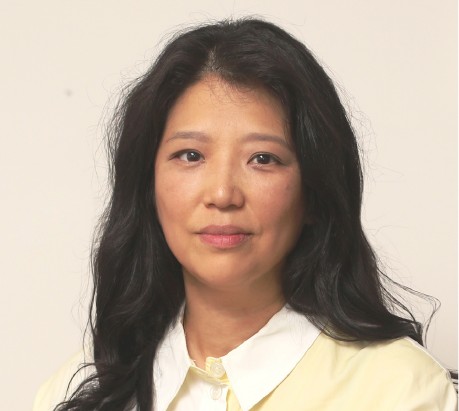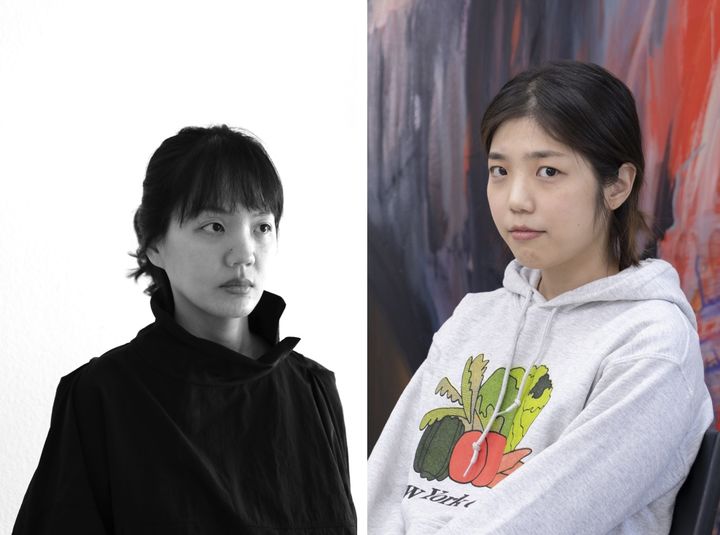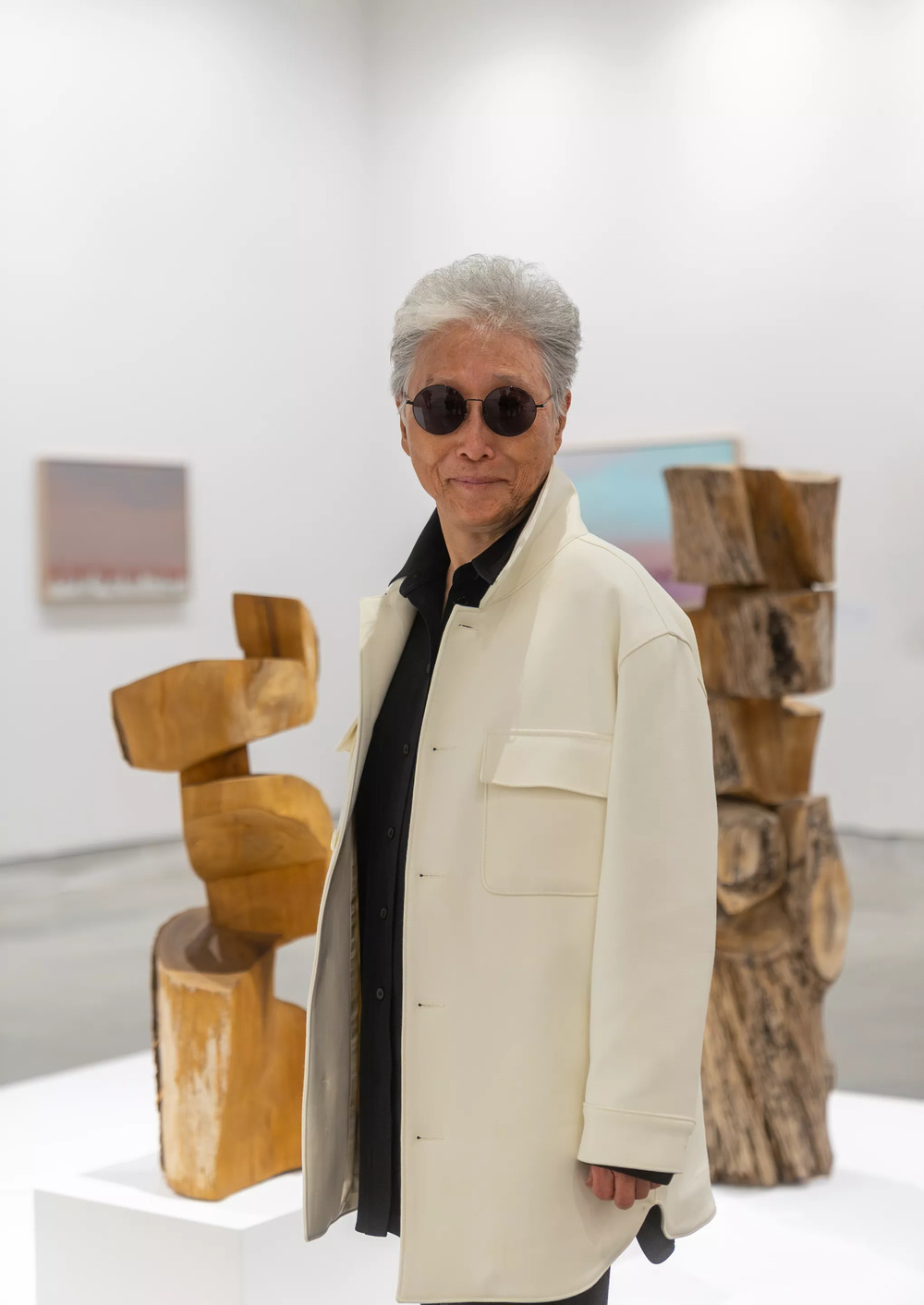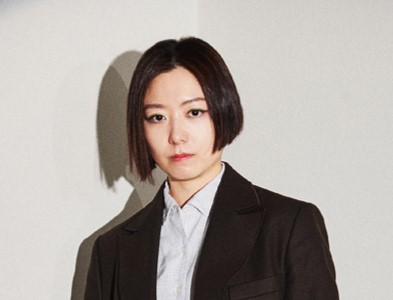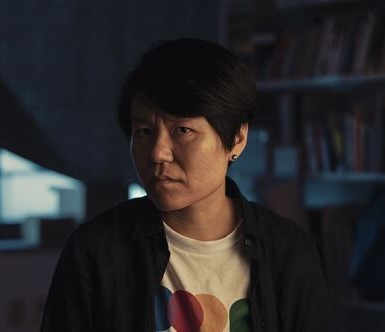Sojung Jun (b. 1982) has drawn inspiration
from the stories of individuals she encounters, focusing on the voices of
individuals hidden behind history and society and exploring how transitions in
physical boundaries affect their lives. She reconstructs narratives borrowed
from interviews, historical materials, and classical texts through video
language and writing.
The artist pays particular attention to
individuals standing on the boundaries within the ruins of modernity, as well
as to invisible values and landscapes, intertwining them with her own
experiences. Through her unique narratives, she constructs a nonlinear sense of
time and space, revealing the aesthetic and political dimensions embedded in
the lives of individuals.
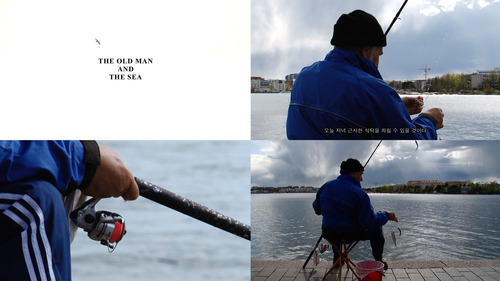
Sojung Jun, The Old Man and The Sea, 2009 ©Sojung Jun
Sojung
Jun's early works are rooted in the lives of individuals she has encountered.
For instance, Three Ways to Elis (2010) traces the life of a
dancer who spent nearly 50 years building her own house and living a life of
her choosing, as told through those who knew her.
This
work became a turning point for Jun, prompting her to deeply reflect on what it
means to live a self-determined life, the attitude of an artist, and the
relationship between art and the public. These considerations led to the
creation of her Everyday Experts series, a collection of 12
video works documenting the lives of individuals who pursue their ideals while
living as "experts of the everyday."
The
first work in this series, The Old Man and The Sea (2009),
was inspired by an old man Jun met during her stay in Finland, who taught her
how to fish. Through this work, Jun illuminates a seemingly mundane fragment of
daily life, revealing the steadfast inner world of the individual.
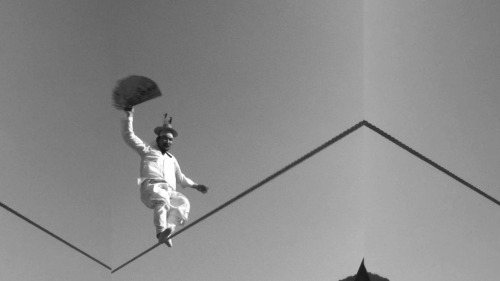
Sojung Jun, Last Pleasure, 2012 ©Sojung Jun
The
artist has encountered various “everyday experts,” including fishermen, piano
tuners, haenyeo (female divers), and machine embroiderers. While their
professions may not traditionally fall within the realm of art, the artist
discovered an artistic attitude in the way these individuals relentlessly push
themselves toward the ideals they have created for their lives.
The
artist views these “everyday experts,” who possess a resolute inner world and a
philosophy of life, as standing on the boundary between art and everyday life.
Created in 2012, Last Pleasure features a tightrope walker
whose life vividly embodies this boundary. In the tightrope walker’s existence,
the tangible reality on the ground and the lofty ideals of the air are
distinctly separated by the fine line of the rope. While the protagonist is
ridiculed as a clown in reality, he experiences boundless joy and exhilaration
when standing on the rope.

Sojung Jun, The Habit of Art, 2012, Installation view of “11th Gwangju Biennale” (2016) ©Sojung Jun
Sojung
Jun reflects on the act and attitude of creating art as an artist through the
lives of these individuals, a contemplation that culminates in The
Habit of Art (2012). This work consists of seven video pieces that
repeat simple episodes and photographic works of symbolic images featured in
the videos.
The
series begins with a video showing the image of a bird emerging from flames,
reborn from the ashes of a blackened fire. Other videos depict actions such as
arduously filling a bottomless jar with water, carefully stacking matchsticks
layer by layer, capturing the reflection of the moon on water, mesmerizing
viewers with glass bead tricks, fearlessly leaping through flaming hoops, and
precariously walking on a narrow balance beam. These scenes are presented in a
minimalist, repetitive manner, emphasizing their simplicity and resonance.
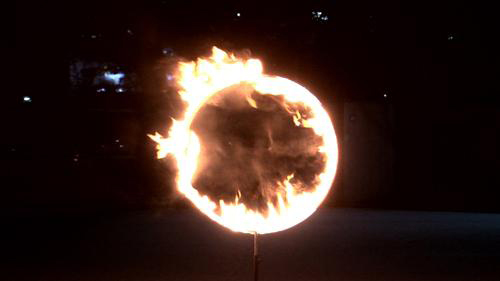
Sojung Jun, The Habit of Art VI, 2012 ©Sojung Jun
However,
the moment we become aware of the unseen individual enabling these visually
simple and repetitive acts, the endlessly looping videos begin to reveal layers
of complex narratives. The seemingly reckless yet resolute actions in the
videos evoke the lives of the “everyday experts” the artist has encountered,
seamlessly connecting their stories into a singular visual narrative.
Through
this approach, Sojung Jun microscopically examines individual lives, observing
the intersection of art and life or reconstructing and recording the small,
seemingly insignificant stories of individuals hidden within the backdrop of
vast social structures.
Subsequently,
the artist began to focus on those existing in the margins, left outside the
sphere of modernization. Modernity is a time-space dominated by national
identity, rationality, acceleration, and capitalism. Jun directs her gaze
toward those who stand at the boundaries of this modernized time and space.
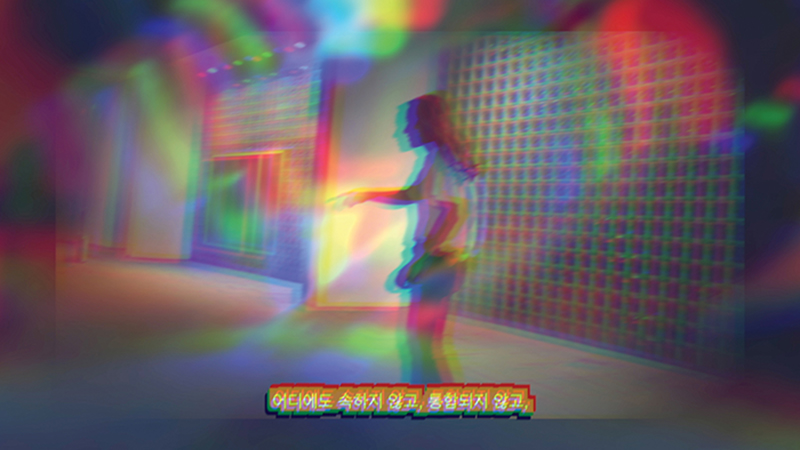 Sojung Jun, La
Nave de los locos (The Ship of Fools), 2016 ©Sojung Jun
Sojung Jun, La
Nave de los locos (The Ship of Fools), 2016 ©Sojung JunOne
such work, La Nave de Los Locos (The Ship of Fools) (2016)
departs from the 1984 released novel of the same name by the Uruguay-born
refugee novelist, poet, translator and author Christina Peri Rossi. If Peri
Rossi’s novel derives from her self-awareness of her meson-like identity formed
through her experiences as an asylum seeker, a woman, and a homosexual, Jun’s
video is an attempt to insert the novel’s storyline into current context.
The
video unfolds around a text written in the form of an imaginary letter
addressed to Peri Rossi, invoking individuals like refugees who are forced to
move due to involuntary circumstances. Alongside this, the artist weaves her
sensory impressions of an unfamiliar city experienced as an outsider, as well
as her personal accounts of boundaries and movement.
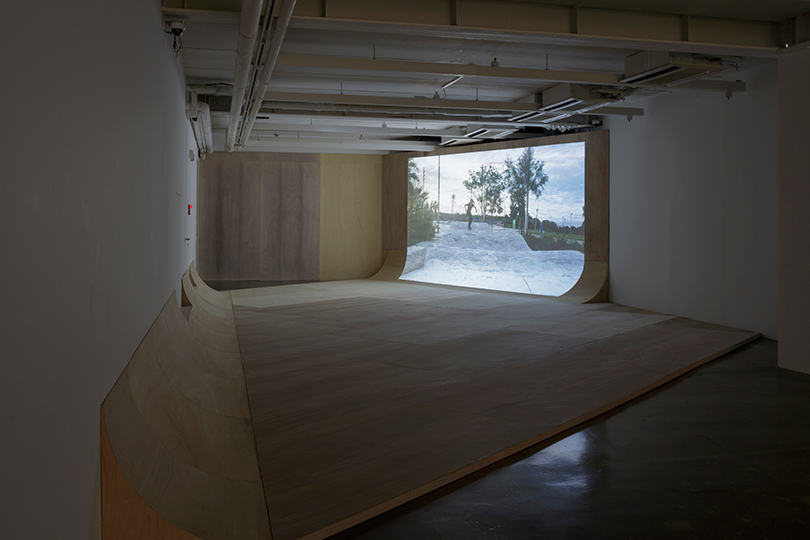 Sojung Jun, La
Nave de los locos (The Ship of Fools), 2016, Installation view of
“Kiss me Quick” (SONGEUN, 2017) ©Sojung Jun
Sojung Jun, La
Nave de los locos (The Ship of Fools), 2016, Installation view of
“Kiss me Quick” (SONGEUN, 2017) ©Sojung JunWhile
working on this project, Sojung Jun stayed in Barcelona, where she met Juan
Casoliva, a visually impaired dancer. Juan suggested that she experience visual
impairment herself. Accepting this proposal, the artist navigated the city with
a cane, blindfolded, relying solely on touch to sense and experience her
surroundings.
This
sensory experience evolved into a practice of indirectly perceiving and sharing
the invisible, as seen in works like La Nave de los Locos (The Ship of
Fools). In this piece, the sound of a young person skateboarding
through the city is combined with the sound of waves, allowing viewers to sense
the precarious existence of refugees drifting across the Mediterranean.
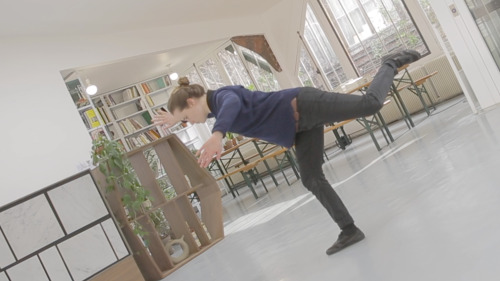
Sojung Jun, Interval. Recess. Pause., 2017 ©Sojung Jun
Her
encounter with Juan inspired Sojung Jun to explore the potential of senses such
as hearing, smell, and touch to reveal the invisible. In a modern culture
predominantly centered on vision, these non-visual senses, often diminished or
overlooked, act as mediators in her work, traversing the boundary between the
visible and the invisible.
The
video Interval. Recess. Pause. (2017) is a piece about three
Korean adoptees the artist met during her residency at the Villa Vassilieff-
Pernod Ricard Fellowship in France. The video alternates between testimonials
of the adoptees of their memories and choreographer Olivia Lioret’s
interpretative moves of the excerpts from Theresa Hak Kyung Cha’s book Dictée
(1982).
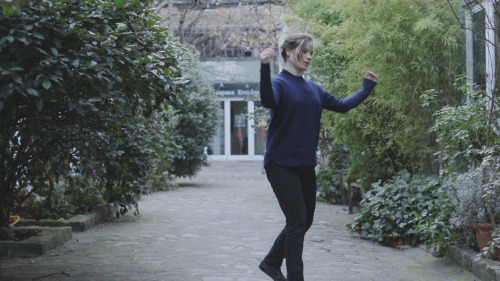
Sojung Jun, Interval. Recess. Pause., 2017 ©Sojung Jun
The
childhood memories of adoptees exist not as clear images but as fragments of
non-visual senses such as sounds, tastes, smells, and tactile sensations. In
this work, Sojung Jun reconstructs their fragmented memories—intertwined with
various sensory experiences—through a nonlinear arrangement of collective and
personal images and sounds that span different times and spaces.
Thus,
Interval. Recess. Pause. emerges as a collection of diverse
sensory experiences, reflecting the amorphous nature of their memories. It
invites the imagination to dwell within the gaps of their irreproducible
recollections.

Sojung Jun, Eclipse I, 2020 ©Sojung Jun
Meanwhile, the 2020 video work Eclipse I, II questions the sensory experiences and emotions evoked by the division and borders of the Korean Peninsula in the present day. This work, inspired by composer Isang Yun's Double Concerto, which uses the Korean folktale of Gyeonwoo and Jiknyeo (two lovers separated by the Milky Way) as a metaphor for the relationship of North and South Korea, explores the psychological and physical boundaries of people still living in a divided situation, using sound and imagery.

Sojung Jun, Eclipse II, 2020 ©Sojung Jun
Eclipse I, II is a
two-channel video created based on performances of two pieces composed for the
12-stringed North Korean gayageum and harp. The project was a collaboration
with gayageum player Soona Park (North Korean gayageum), harpist Jungyeong
Bang, and composers Soojung Shin (Eclipse I) and Jiyoung Kim
(Eclipse II).
Playing with the dizzying intersections of
horizontal and vertical lines of the string instruments and the performers’
fingers, Jun’s videos create equally dizzying montages of images that
constantly slide and fragment. In the midst of disorienting encounters of
angles and viewpoints, they also capture fleeting, ephemeral points of accord.
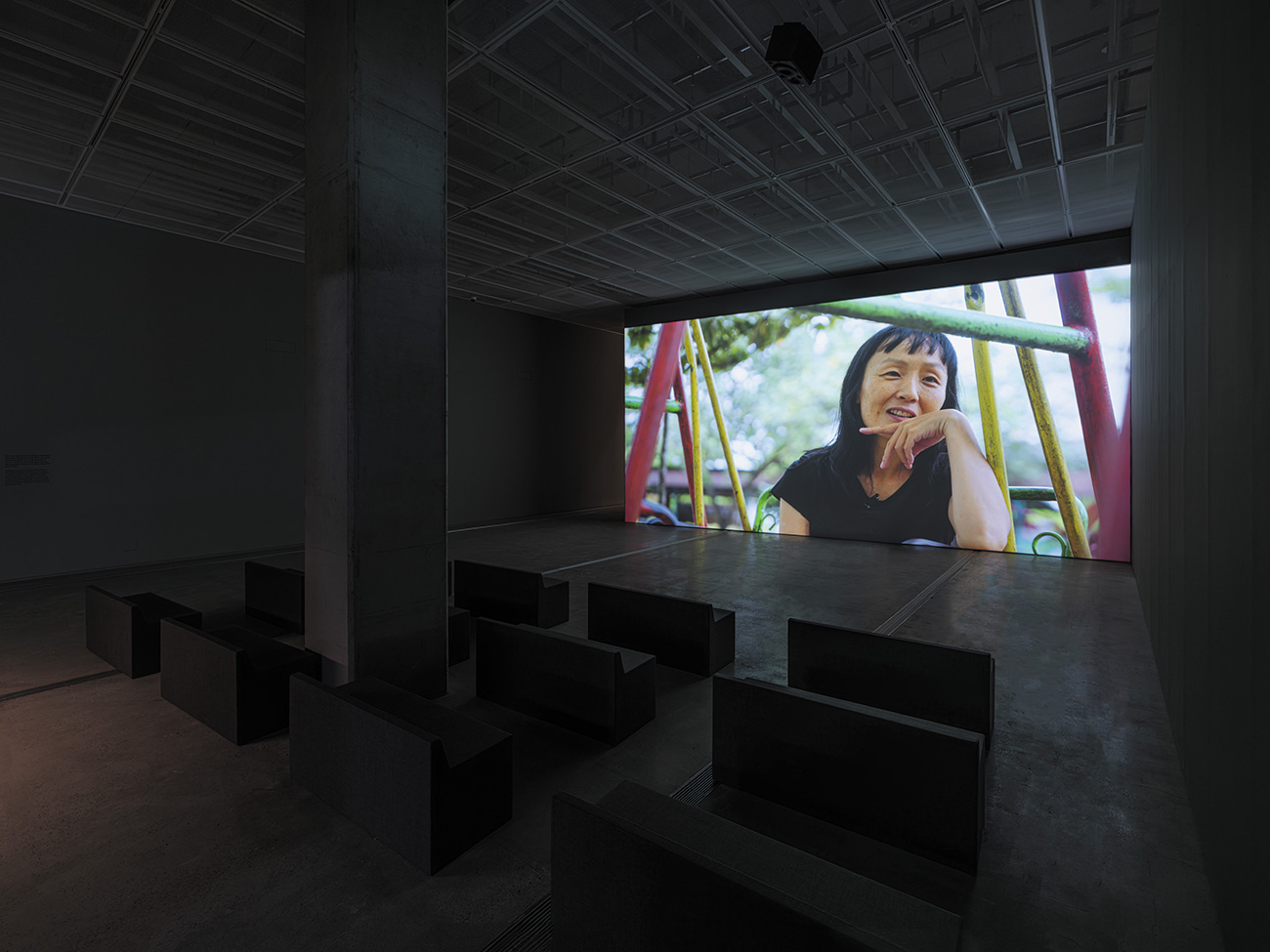 Sojung Jun, Syncope,
2023, Installation view of “Korea Artist Prize 2023” (MMCA, 2023) ©MMCA
Sojung Jun, Syncope,
2023, Installation view of “Korea Artist Prize 2023” (MMCA, 2023) ©MMCAThe
video work Syncope (2023), first presented at the
"Korea Artist Prize 2023" exhibition at the National Museum of Modern
and Contemporary Art Korea, portrays the journey of diaspora crossing physical
boundaries in an accelerated modern society, expressed in the form of complex sensory
experiences. The video moves along the trajectory of sounds, such as the
vibrations of the Trans-Siberian Railway, the sounds of different languages,
and the ruptures of musical notation beyond traditional scores.
The
video unfolds around the diaspora journey of female instrument players Celia
and Soona Park, who have appeared in previous works. The train's vibrating
sound evokes the accelerationism of modernity, but this is subverted by the
nonlinear sounds of the diaspora's performances, which cross mental and
physical boundaries.
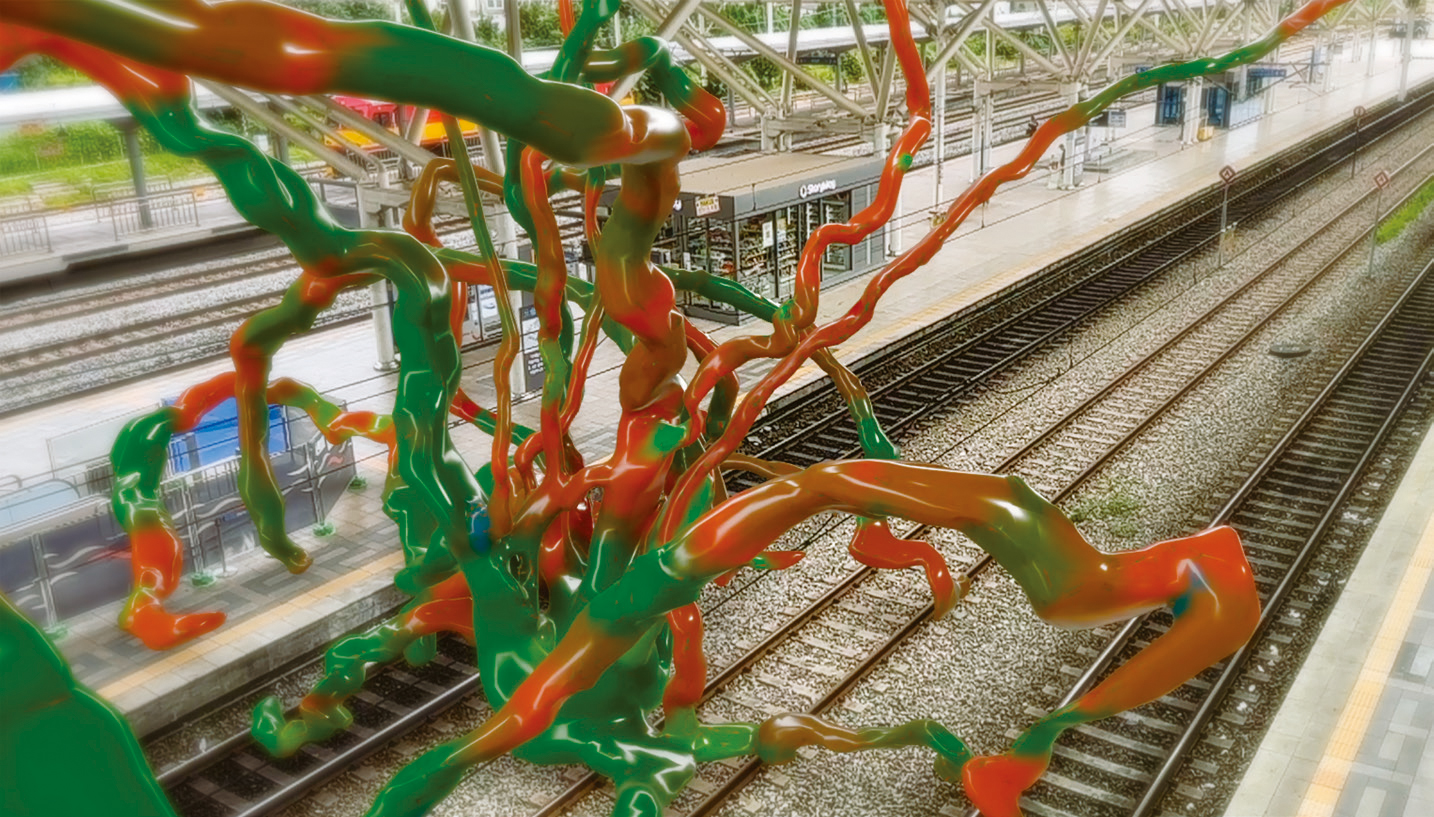 Sojung Jun, Syncope,
2023 ©Sojung Jun
Sojung Jun, Syncope,
2023 ©Sojung JunIn this work, Sojung Jun overlaps the
modern speed of trains crossing Asia and Europe, the physical speed of bodies
crossing borders, the speed of data, and the ecological speed of moving plants,
considering the world of acceleration that spans the past, present, and future,
and the practices of those who disrupt it, through the movement of sound.
The artist focuses on the nomadic identity
of transformation and mutation, emphasizing the practices of boundary-crossing
entities that cannot be confined within existing classifications or
institutional norms. She imagines a platform for these boundary-crossing
existences and deviates from the linear path of modernity.
Sojung Jun has consistently focused on
voices and landscapes of individuals omitted in the process of modernization.
She explores ways of writing history that do not erase diversity and
difference, seeking her own language in the process. To this end, she shares
her questions with collaborators from various fields, presenting her
reflections in complex sensory forms. Her work brings a new awareness of
history and the present.
“What I have been interested in is ‘the things that
happen at the borders’ and their ambiguity, (…) I take a deep affection in
rewriting the stories, time, and landscapes of individuals that were omitted
within the speed of the city.”
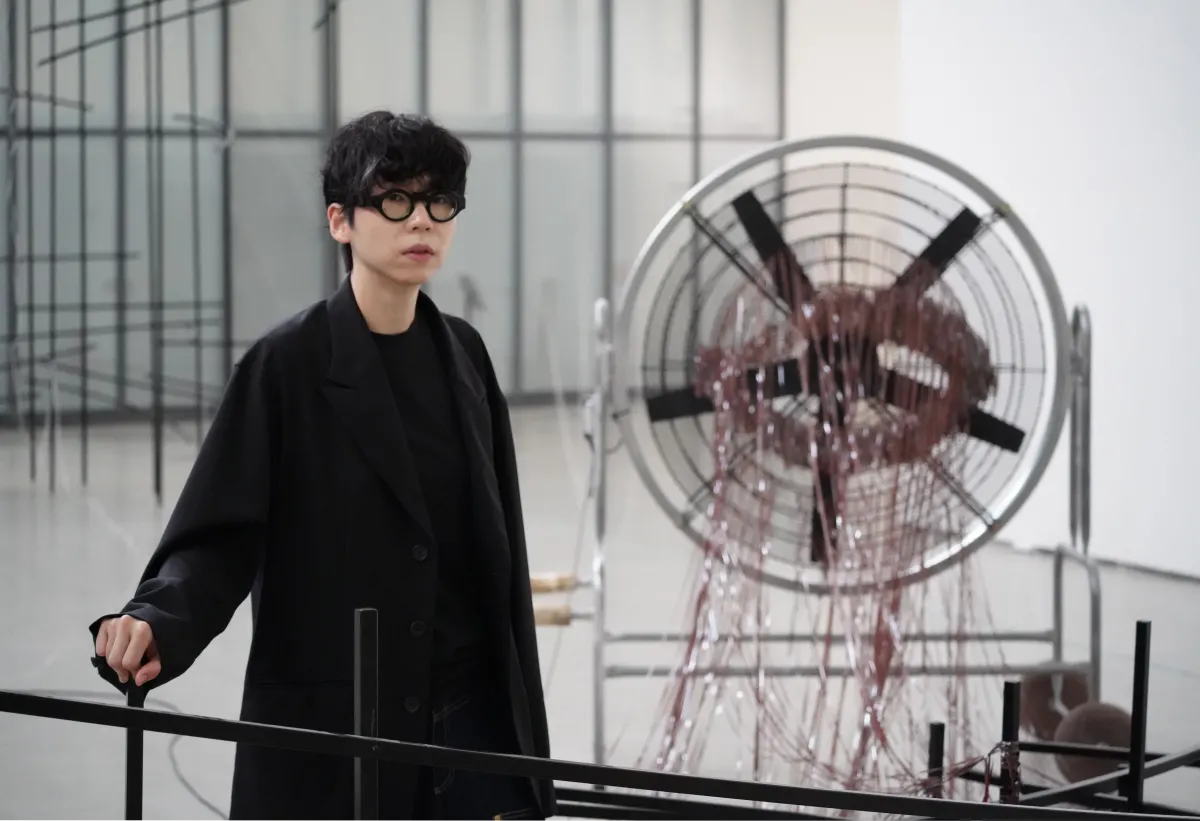 Artist
Sojung Jun ©Barakat Contemporary
Artist
Sojung Jun ©Barakat ContemporarySojung
Jun has received her BFA in Sculpture from Seoul National University and MFA in
Media Art from the Graduate School of Communication & Art at Yonsei
University. Jun has held solo and group exhibitions at a number of institutions
including National Museum of Modern and Contemporary Art Korea, Seoul Museum of
Art, Kunstmuseum Bern, Nam June Paik Art Center, Atelier Hermès, ARKO Art
Center, Palais de Tokyo, Villa Vassilieff, 11th Gwangju Biennale, The National
Museum of Art, Osaka, Leeum Samsung Museum.
She
is the recipient of the Hermès Foundation Missulsang 2018, Villa Vassilieff
Pernod Ricard Fellowship, Paris, France 2016, Noon Art Prize, Gwangju Biennale
2016, and grand prize, SONGUN Art Award in 2024.
Jun’s
works are in the permanent collection of leading art galleries and institutions
around the world such as Han Nefkens Foundation, Uli Sigg Collection, MMCA,
Seoul Museum of Art, Leeum Museum of Art, The National Museum of Art, Osaka,
Ulsan Museum of Art, Busan Museum of Art, Gyeonggi Museum of Art, Doosan Art
Center, and SONGEUN Art and Cultural Foundation.
References
- 전소정, Sojung Jun (Artist Website)
- 올해의 작가상 2023, 전소정 (Korea Artist Prize 2023, Sojung Jun)
- 바라캇 컨템포러리, 전소정 (Barakat Contemproary, Sojung Jun)
- 노블레스, 그녀만의 내러티브, 2019.03.06
- 국립현대미술관, 전소정 | 마지막 기쁨, 어느 미싱사의 일일, 열 두개의 방, 보물섬 | 2012, 2012, 2014, 2014 (National Museum of Modern and Contemporary Art Korea (MMCA), Sojung Jun | Last Pleasure, A Day of a Tailor, The Twelve Rooms, Treasure Island | 2012, 2012, 2014, 2014)
- 갤러리 잔다리, 예술하는 습관 (Gallery Zandari, The Habit of Art)
- 송은, 전소정: Kiss me Quick (SONGEUN, Sojung Jun: Kiss me Quick)
- 리움미술관, 그린 스크린 (Leeum Museum of Art, Green Screen)



